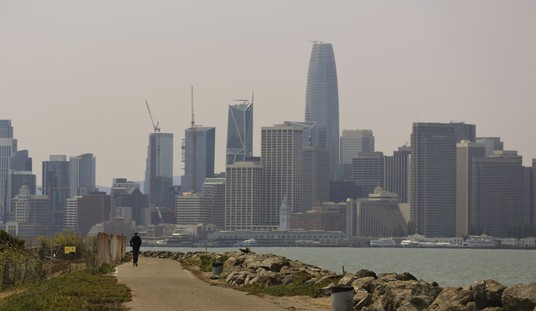If you have a job right now, don’t thank the company that hired you or the investors that created the company. According to Hillary Clinton, they didn’t build that. At first arguing that hiking the minimum wage would not cost jobs, the presumed Democratic presidential frontrunner then extended those thoughts in a very peculiar way:
At a Democratic rally in Massachusetts, Hillary Clinton’s attempt to attack “trickle-down economics,” resulted in a spectacularly odd statement. …
She went on to state that businesses and corporations are not the job creators of America. “Don’t let anybody tell you that it’s corporations and businesses that create jobs,” the former Secretary of State said.
It’s actually a total non-sequitur. “Trickle-down economics” has to do with expanding investment, which actually worked spectacularly in the 1980s, but it’s not a theory on which the entire concept of job creation relies. One can criticize “trickle-down economics” without offering the entirely vapid argument that corporations and businesses don’t create jobs. They don’t get created by book tours, after all. The tens of millions that Hillary Clinton collects from publishers and speeches pay for a handful of staff jobs at the Clinton Foundation, perhaps, but that same cash turned into investment would create jobs that actually produce goods and services in a market, which then create secondary jobs, and so on.
Besides, Hillary’s argument here is entirely divorced from reality and actual data. The miminum-wage bill for which Hillary Clinton voted passed in 2007 and took effect in stages, beginning that summer. In June 2007, the Household Survey of the BLS showed that the US economy had 146.063 million jobs in June 2007, just before the increase took place. Last month’s data showed that the US economy had 146.6 million jobs — an increase of less than 500,000 in over 7 years, not “millions of jobs” as Hillary claims here. In fact, the 146.6 million is the highest it’s ever gotten since the passage of that law. In the same period, the civilian workforce participation rate has gone from 66% to 62.7%. On a population basis, there are a lot fewer people working after the last minimum wage hike, not more, and wages are actually down, not up.
Compare this to the “trickle-down” era of the Reagan presidency. When Reagan took office in January 1981, the US economy had 99.995 million jobs and the participation rate was 63.9%. By the end of his presidency in January 1989, the US economy had grown more than 16 million jobs (116.708 million total) and the participation rate had leaped to 66.5%. That covers nearly the same length of time since the last minimum wage hike (96 months vs 89 months), but both include about five years of technical economic recovery.
Obviously there were other factors in play here, so lets focus on something more directly affected by minimum-wage hikes — teen unemployment, which is where minimum-wage hikes have the most impact. When Reagan took office, teen unemployment was 19.1%, but it dropped to 16.4% by the end of his presidency. In June 2007, it was at a similar level, 16.3%. Today it’s 20%, and has been bouncing in 2014 between 19% and 21%. Don’t forget that these figures are more than five years into a supposed recovery.
It’s not easy to get economics this wrong in such a short space of time. At some point, Democrats are going to have to come to grips with the fact that their front-runner is not just a lousy campaigner, but perhaps just as incompetent as the President from which they’re all attempting to run away at the moment.








Join the conversation as a VIP Member